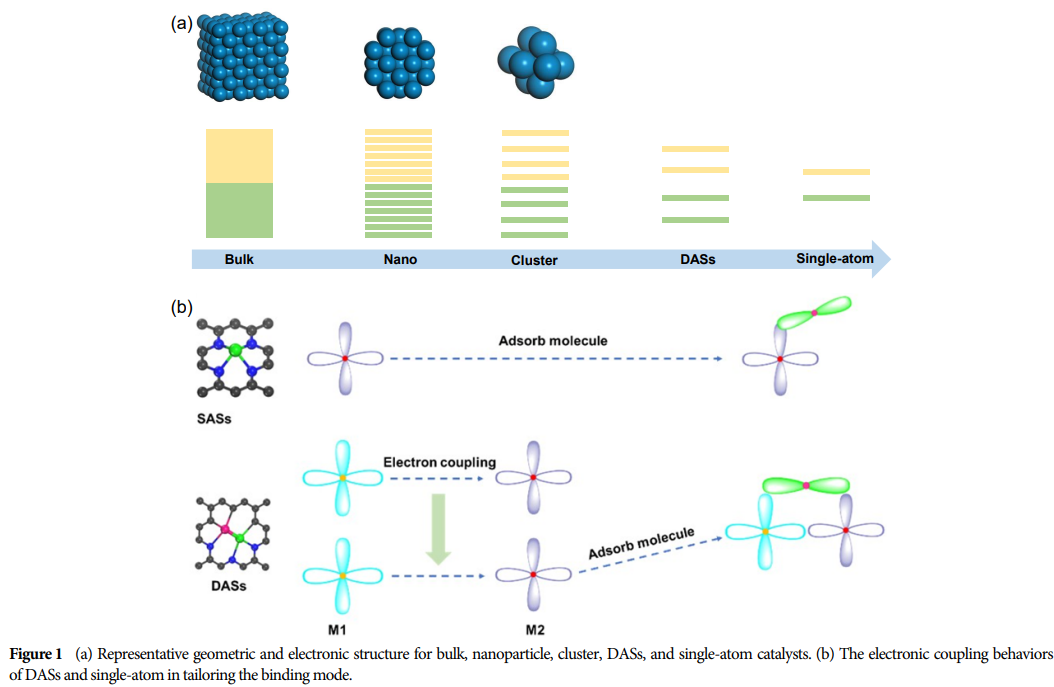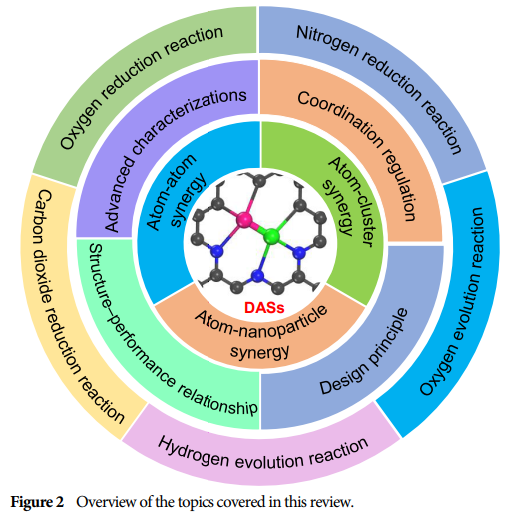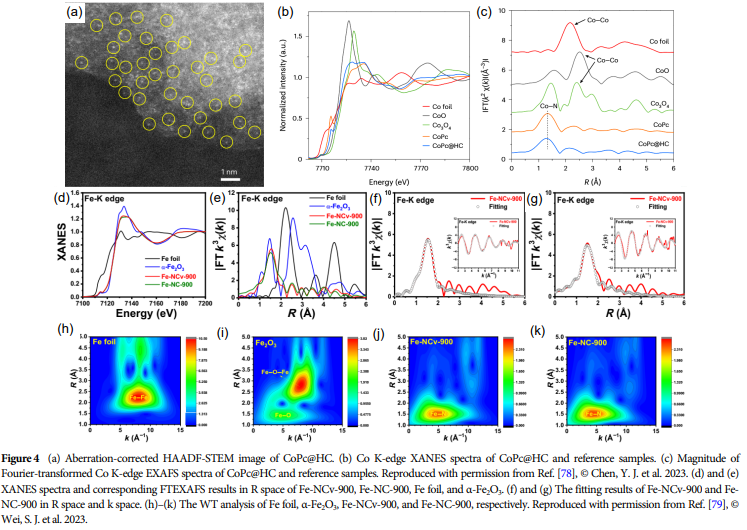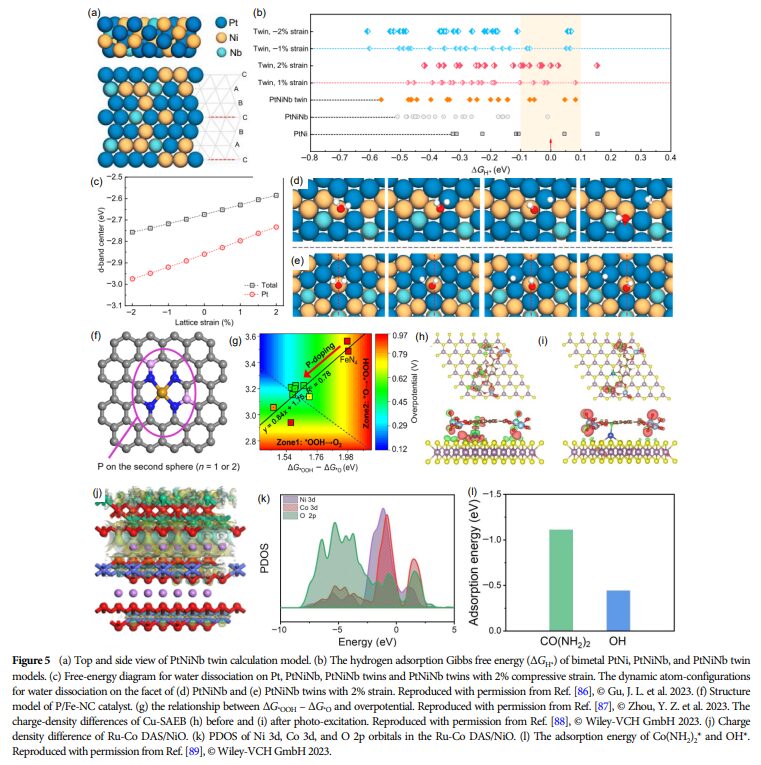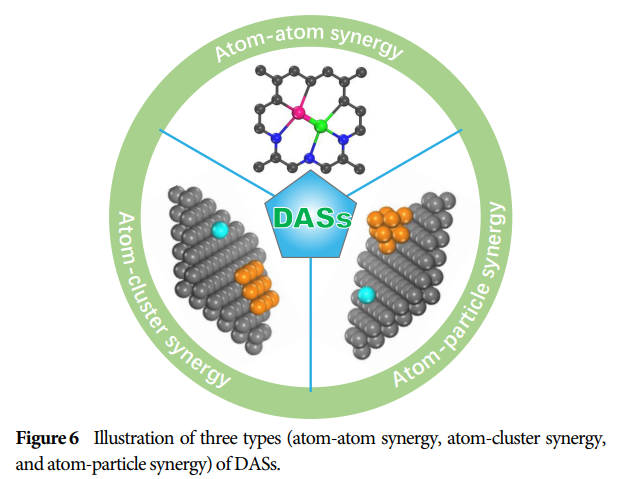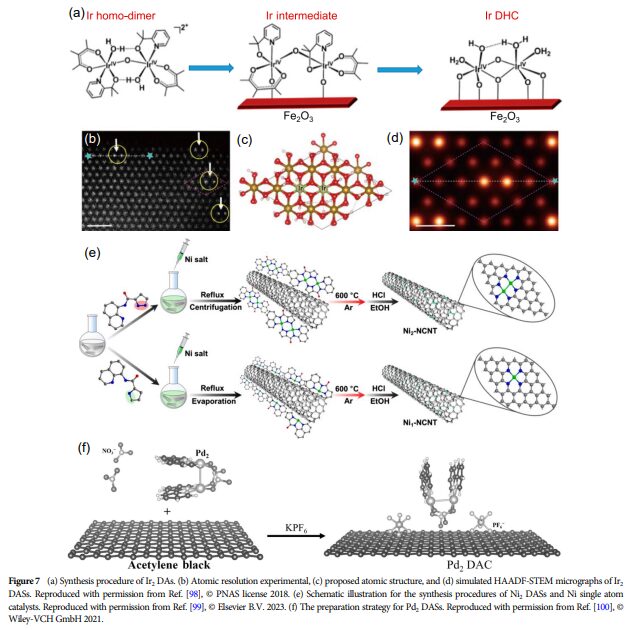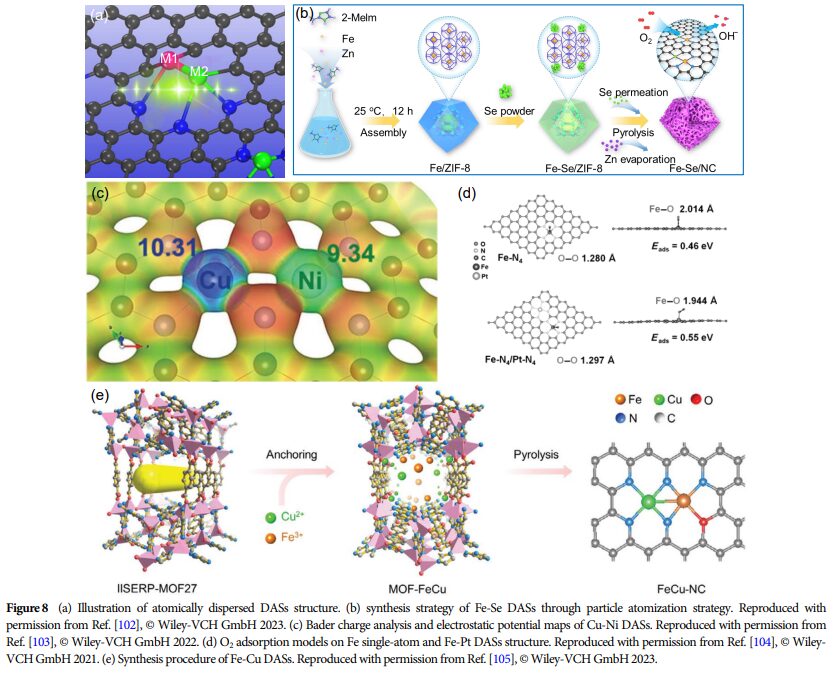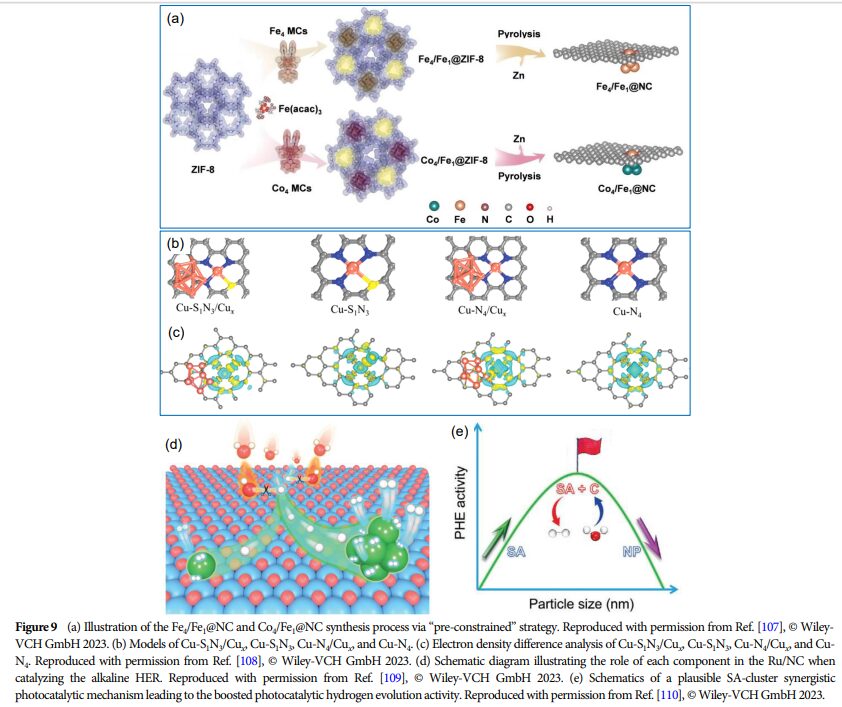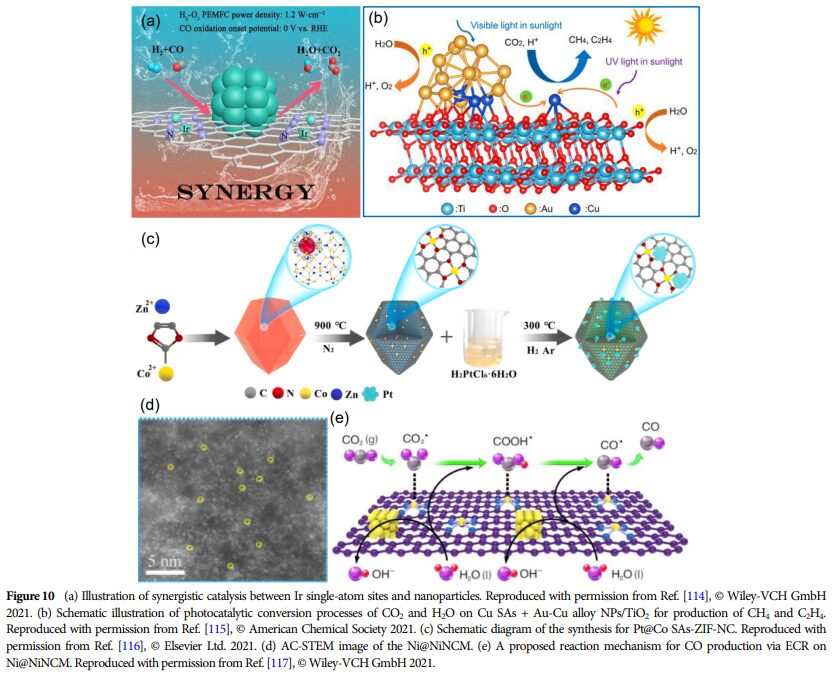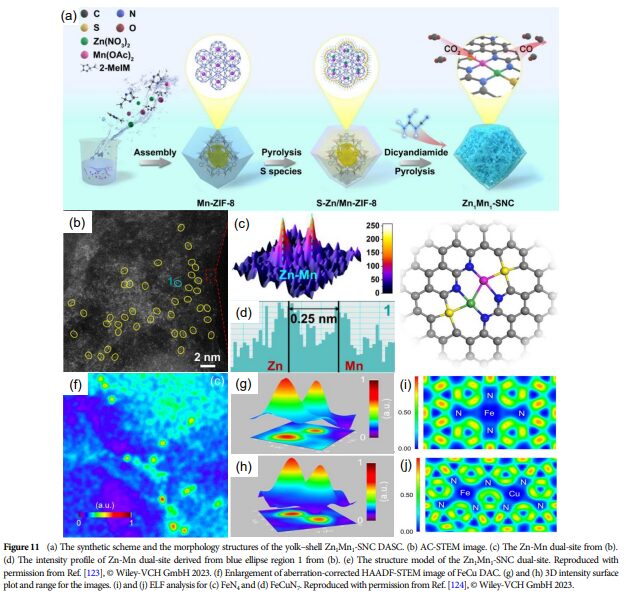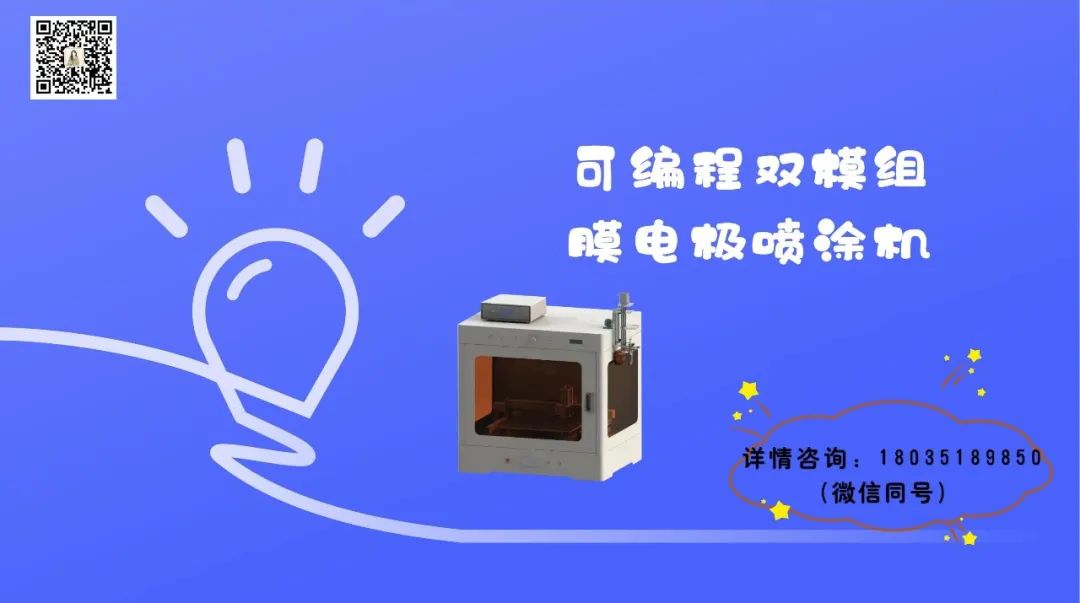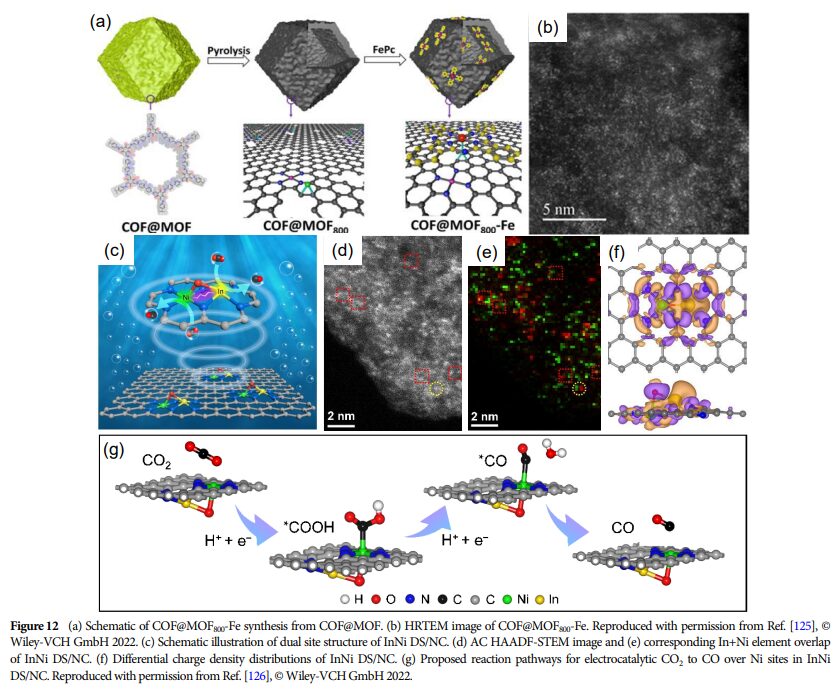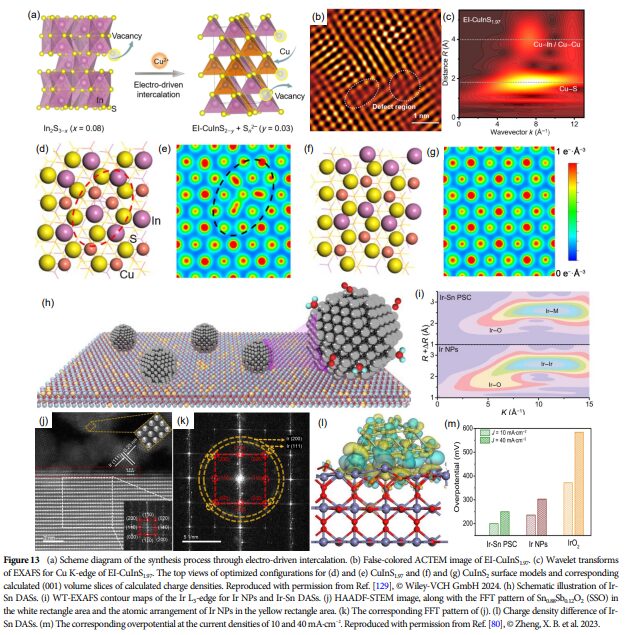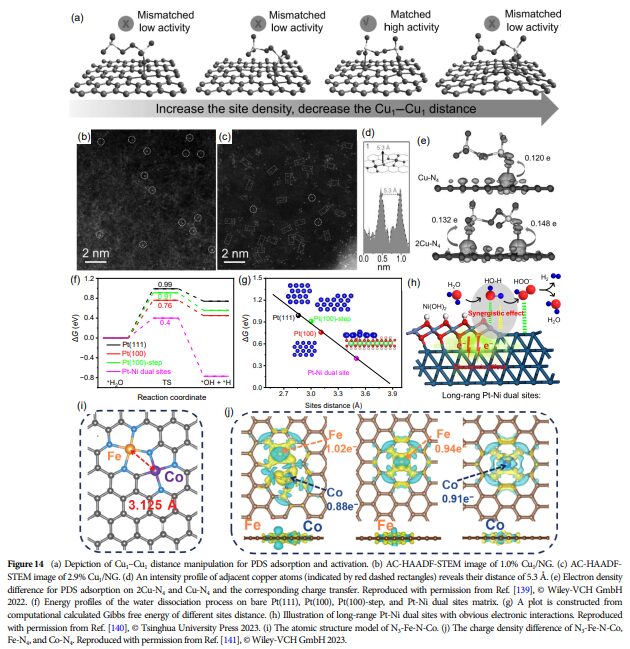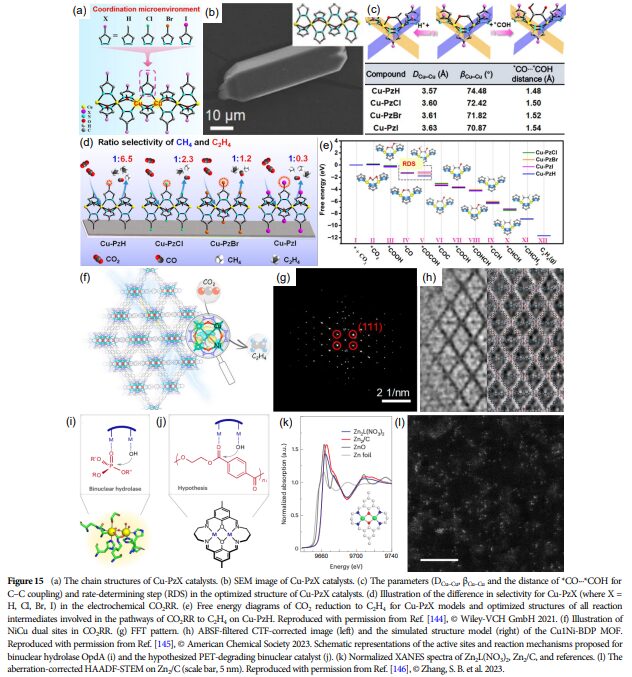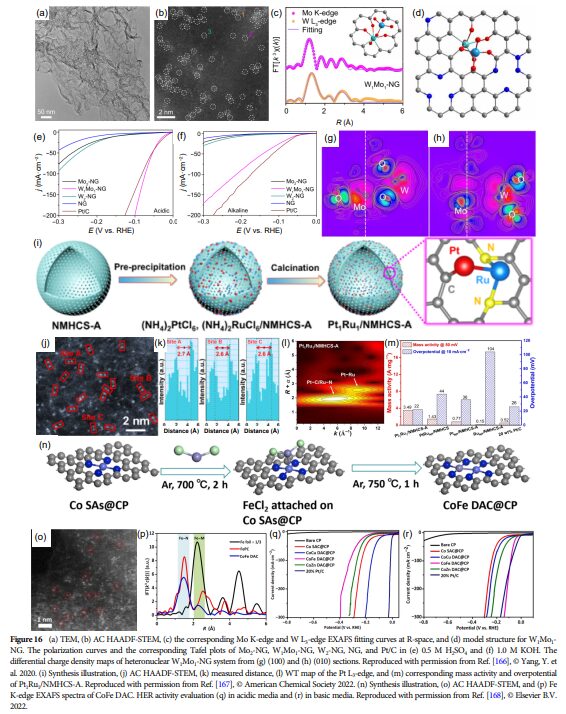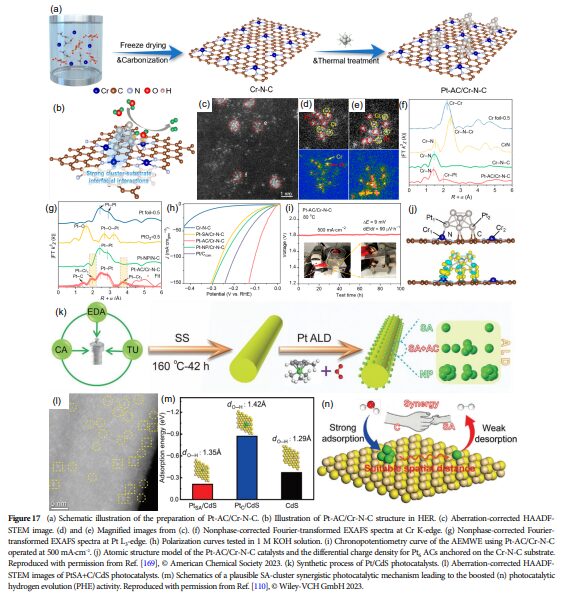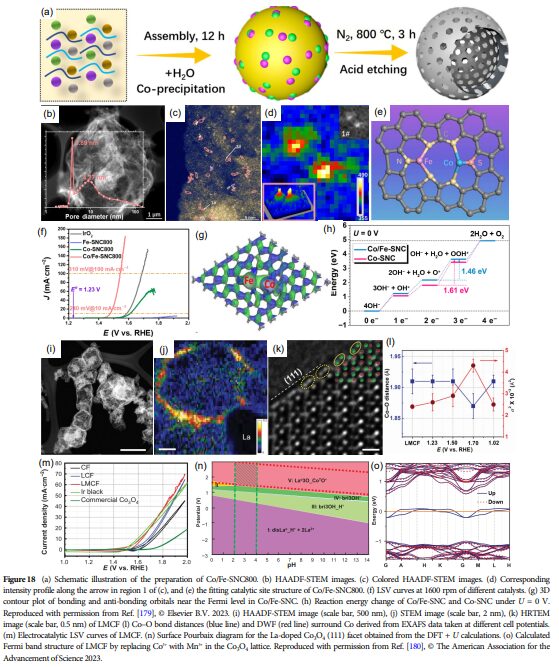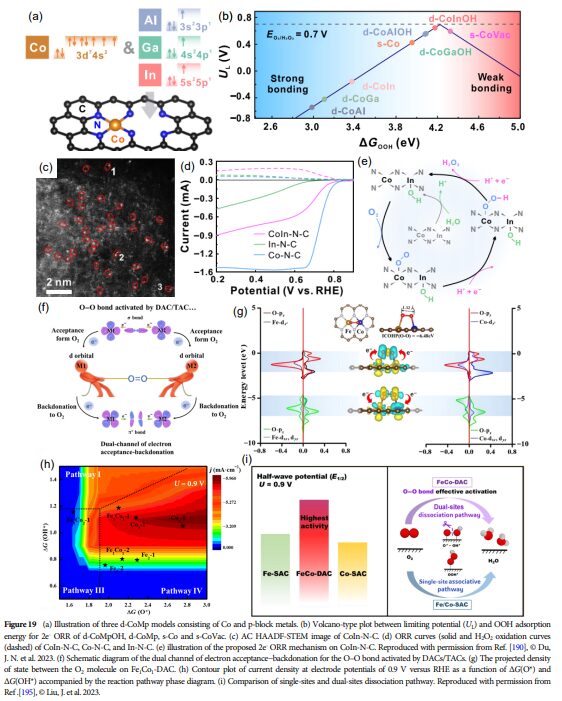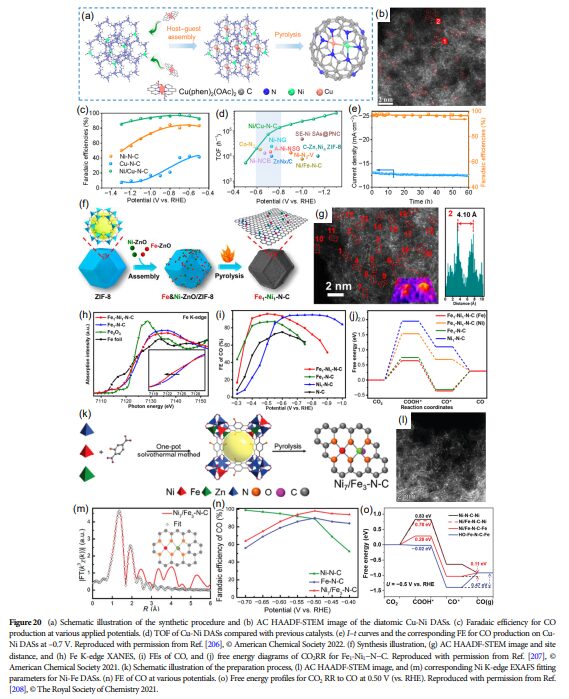Skip to content
 Single-atom sites have been widely used in various fields of electrocatalysis due to their high atomic utilization, mass activity, and selectivity. However, due to the inherent characteristics of single metal centers, single-atom sites have limitations in catalyzing multi-electron reactions. Dual Atom Sites (DASs) have garnered significant attention as promising candidates because neighboring active sites can accelerate catalytic performance through a synergistic effect.
This paper systematically summarizes the fundamental principles, intrinsic mechanisms, and corresponding electrocatalytic applications of dual atom sites.By constructing clearly defined dual atom sites based on theoretical principles, different synergistic dual sites are demonstrated to reveal the relationship between structure and performance.The article also outlines the applications of electrocatalysis, including oxygen reduction reactions, hydrogen evolution reactions, oxygen evolution reactions, carbon dioxide reduction reactions, and nitrogen reduction reactions. Finally, the paper provides conclusions and future prospects, revealing the challenges currently faced in the rational design, synthesis, and regulation of advanced dual atom sites for electrocatalytic reactions.
Single-atom sites have been widely used in various fields of electrocatalysis due to their high atomic utilization, mass activity, and selectivity. However, due to the inherent characteristics of single metal centers, single-atom sites have limitations in catalyzing multi-electron reactions. Dual Atom Sites (DASs) have garnered significant attention as promising candidates because neighboring active sites can accelerate catalytic performance through a synergistic effect.
This paper systematically summarizes the fundamental principles, intrinsic mechanisms, and corresponding electrocatalytic applications of dual atom sites.By constructing clearly defined dual atom sites based on theoretical principles, different synergistic dual sites are demonstrated to reveal the relationship between structure and performance.The article also outlines the applications of electrocatalysis, including oxygen reduction reactions, hydrogen evolution reactions, oxygen evolution reactions, carbon dioxide reduction reactions, and nitrogen reduction reactions. Finally, the paper provides conclusions and future prospects, revealing the challenges currently faced in the rational design, synthesis, and regulation of advanced dual atom sites for electrocatalytic reactions.
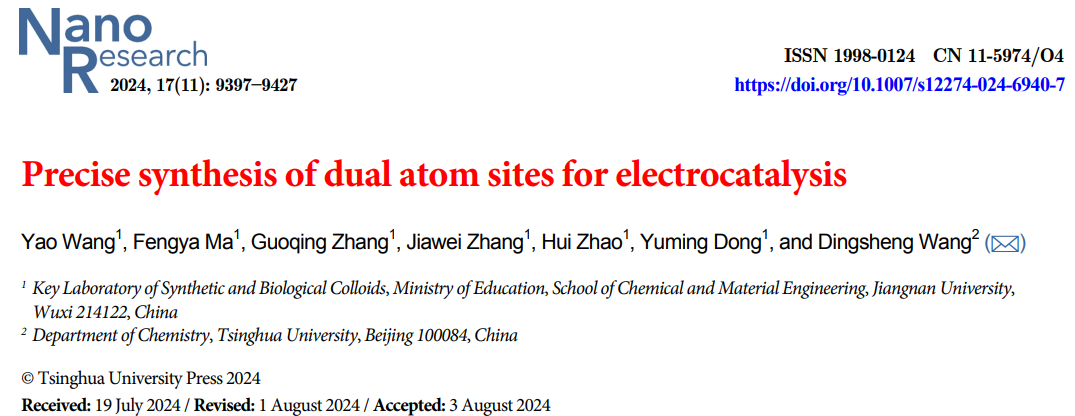
Dual-atom catalysts (DACs) have shown great potential in the field of electrocatalysis, particularly in oxygen reduction reactions (ORR) and carbon dioxide reduction reactions (CO2RR). These catalysts are highly regarded in the field of electrocatalysis due to their high atomic efficiency and intrinsic activity. However, precisely constructing dual atom sites remains a challenge. To address this issue, researchers have proposed various strategies to achieve the precise synthesis of dual atom catalysts.
One strategy is the post-modification method to precisely construct dual atom sites.This method first introduces a primary single atom site, followed by the introduction of a secondary metal precursor to establish direct metal-metal interactions. This interaction ensures the formation of the desired atomic pair structure during the subsequent pyrolysis process, successfully constructing DACs. For example, the FeCo-NC DAC prepared by this method exhibited superior activity in oxygen reduction electrocatalysis, with a half-wave potential reaching 0.91V (versus the reversible hydrogen electrode).The zinc-air battery equipped with FeCo-NC DAC also demonstrated a higher peak power density compared to batteries using Pt/C benchmark catalysts.More importantly, this post-modification strategy has proven to be universal and can be used to synthesize various dual atom sites.
 Another strategy is the pre-coordination strategy for the precise synthesis of neighboring dual-site single atom catalysts (DSACs).This strategy ensures the precise construction of metal pairs through selective coordination of phthalocyanine with specific coordination sites (such as -F- and -OH-). Subsequently, the in-situ confined structure suppresses the random migration of metal pairs during high-temperature pyrolysis, resulting in DSACs with well-defined metal pair structures.The CuNi-DSACs prepared by this method exhibited excellent catalytic activity and stability in CO2RR.
Another strategy is the pre-coordination strategy for the precise synthesis of neighboring dual-site single atom catalysts (DSACs).This strategy ensures the precise construction of metal pairs through selective coordination of phthalocyanine with specific coordination sites (such as -F- and -OH-). Subsequently, the in-situ confined structure suppresses the random migration of metal pairs during high-temperature pyrolysis, resulting in DSACs with well-defined metal pair structures.The CuNi-DSACs prepared by this method exhibited excellent catalytic activity and stability in CO2RR.
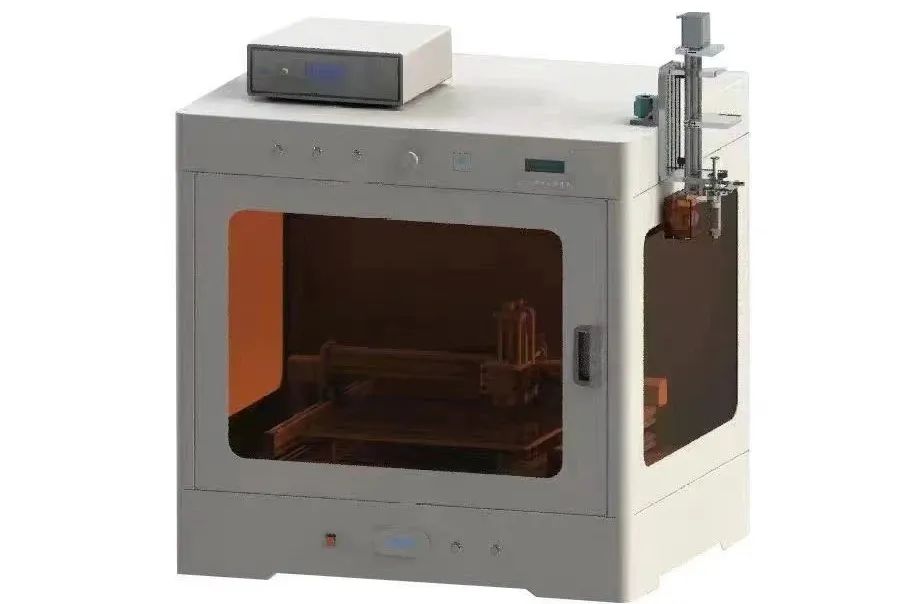
▲ Programmable Dual Module Membrane Electrode Spraying Machine
The advantage of dual atom catalysts and dual-site single atom catalysts lies in the synergistic effect between metal pairs, which can significantly enhance the catalytic performance of the catalysts.For example, the electronic orbital interactions between neighboring metals can modulate the adsorption strength of reactants/products and even alter the adsorption forms of intermediate products, thereby improving catalytic activity and stability. Additionally, these catalysts can break the linear relationship between the adsorption energies of intermediate products in reactions, enhancing the electrocatalytic performance in complex reaction systems involving multiple steps.
However, despite the enormous potential of dual atom catalysts and dual-site single atom catalysts in the field of electrocatalysis, their precise synthesis strategies remain relatively scarce.This limits the widespread application of these catalysts. Therefore, future research needs to continue exploring and developing new synthesis strategies to achieve the precise construction and large-scale production of dual atom catalysts and dual-site single atom catalysts.
In summary, the article covers the precise synthesis of dual atom catalysts and dual-site single atom catalysts and their applications in the field of electrocatalysis. These studies not only advance the development of catalyst synthesis methods but also provide new possibilities for the progress of energy conversion and storage technologies.
▲ Programmable Dual Module Membrane Electrode Spraying Machine
This article is provided by Hydrogen Energy Research Assistant
doi: 10.1007/s12274-024-6940-7.
 Single-atom sites have been widely used in various fields of electrocatalysis due to their high atomic utilization, mass activity, and selectivity. However, due to the inherent characteristics of single metal centers, single-atom sites have limitations in catalyzing multi-electron reactions. Dual Atom Sites (DASs) have garnered significant attention as promising candidates because neighboring active sites can accelerate catalytic performance through a synergistic effect.
Single-atom sites have been widely used in various fields of electrocatalysis due to their high atomic utilization, mass activity, and selectivity. However, due to the inherent characteristics of single metal centers, single-atom sites have limitations in catalyzing multi-electron reactions. Dual Atom Sites (DASs) have garnered significant attention as promising candidates because neighboring active sites can accelerate catalytic performance through a synergistic effect.

